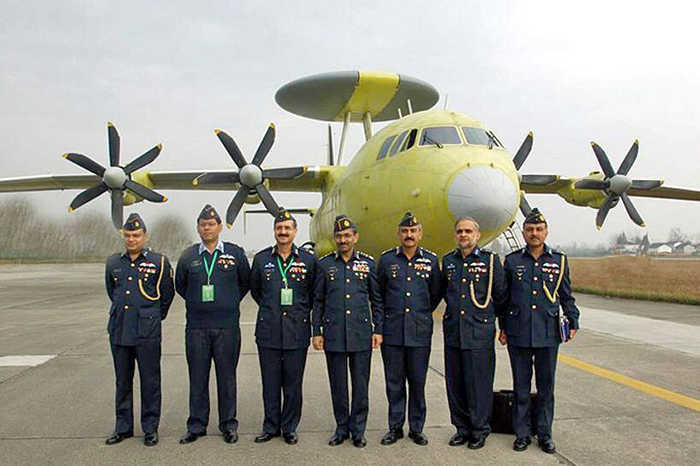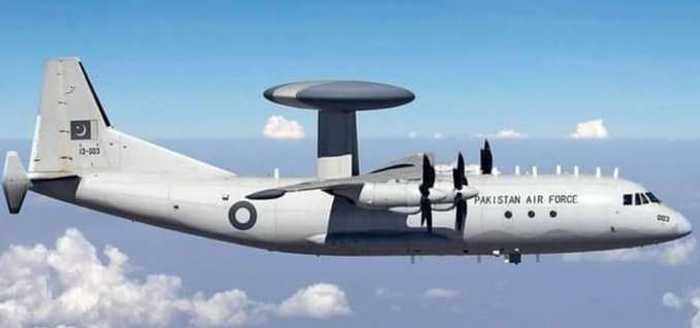Published 15:07 IST, January 2nd 2024
Pakistan to retire its entire Chinese ZDK-03 AEW&C fleet after just 12 years of service
Compatibility issues between Chinese-made systems and Pakistan's Western air defence components might have led to ZDK-03s' early retirement. Check details
- Defence
- 3 min read
Islamabad: Pakistan has made an unexpected decision to retire its entire fleet of ZDK-03 Karakoram Eagle Airborne Early Warning and Control (AEW&C) aircraft after a relatively short service life of just 12 years, according to reports. This move, announced recently, has sparked concerns about Pakistan's air defence capabilities and strategic readiness.
China’s promise disappoints Pak
The ZDK-03s were initially seen as a crucial addition to Pakistan's air defence mechanism, based on the Chinese Shaanxi Y-8 aircraft. They had a wide, rotating radome promising ‘extended’ range and ‘heightened’ situational awareness, essential for monitoring both the eastern and western borders. However, reports state that their performance fell short of expectations and raised doubts about their effectiveness.

In 2008, Pakistan signed a $278 million contract with China for four ZDK03 AWACS systems, tailor-made to the Pakistan Air Force's specifications. These aircraft, based on the Y-8F600 airframe, were equipped with radar and onboard systems developed by China Electronics Technology Corporation (CETC). The first aircraft was delivered in October 2011.
China-Pak not compatibility
Despite the initial optimism, technical issues plagued the fleet, potentially originating from the speculated compatibility problems between the Chinese-made systems and Pakistan's existing American and other Western air defence infrastructure. Reports indicate that these challenges led to the decision for an unexpected early retirement, casting doubts on the reliability and operational costs of the ZDK-03s.

An alleged mid-life upgrade in China, conducted five months ago, further complicated matters as the aircraft were returned without their primary radar and essential equipment, deepening the mystery surrounding the situation.
The retirement of the ZDK-03s leaves Pakistan heavily reliant on its Saab 2000 Erieye AEW&C aircraft, renowned for their stability and effectiveness. However, these are limited in number and range compared to the ZDK-03s, potentially resulting in coverage gaps along the expansive western border with Afghanistan. This shift might impact Pakistan's ability to comprehensively monitor aviation threats.
The sudden withdrawal of the ZDK-03s highlights uncertainties surrounding Pakistan's airborne defence strategy, necessitating a closer evaluation of future investments and partnerships to ensure it can stay somewhat bearish, if not on par, with its adversaries.
Mounting concerns and Pak’s emerging strategic challenges
Although sudden, the four-engine turboprop aircraft equipped with an electronically steered radar antenna, always had its problems. The Pakistan Air Force (PAF) was well apprised, hence it was strategically placed in Masroor Airbase near Karachi’s coast instead of being stationed further inland to cover a larger part of the IB or even the Durand Line. According to reports, the reason for this decision was due to the ZDK’s weak and incapable radar in sea clutter, which is relatively less compared to land clutter. Thus, Pakistan decided to station its Erieye in Kamra instead of the Karakoram Eagles, despite the significant threat posed by TTP to its assets.

The decision to retire these aircraft within a relatively short span has sparked various speculations. According to experts, it was indicative of the poor quality of Chinese military equipment or very high levels of corruption within the Pakistan Air Force. Others raise concerns about Chinese influence in Pakistan's military, potentially allowing the sale of substandard equipment without consequences.
As Pakistan's AEW&C fleet faces downsizing with potentially reduced capabilities, concerns mount over the nation's ability to vigilantly monitor aerial threats. Dependence on a solitary platform elevates vulnerability, highlighting strategic challenges in the event of operational or technical malfunctions.
Updated 15:09 IST, January 2nd 2024